Why do the experts suggest creating a content calendar? Because content creation plays a pivotal role in the success of any online business. To maximize your content marketing efforts, it’s essential to have a well-organized and efficient system in place. This is where a content calendar or editorial calendar comes into play.
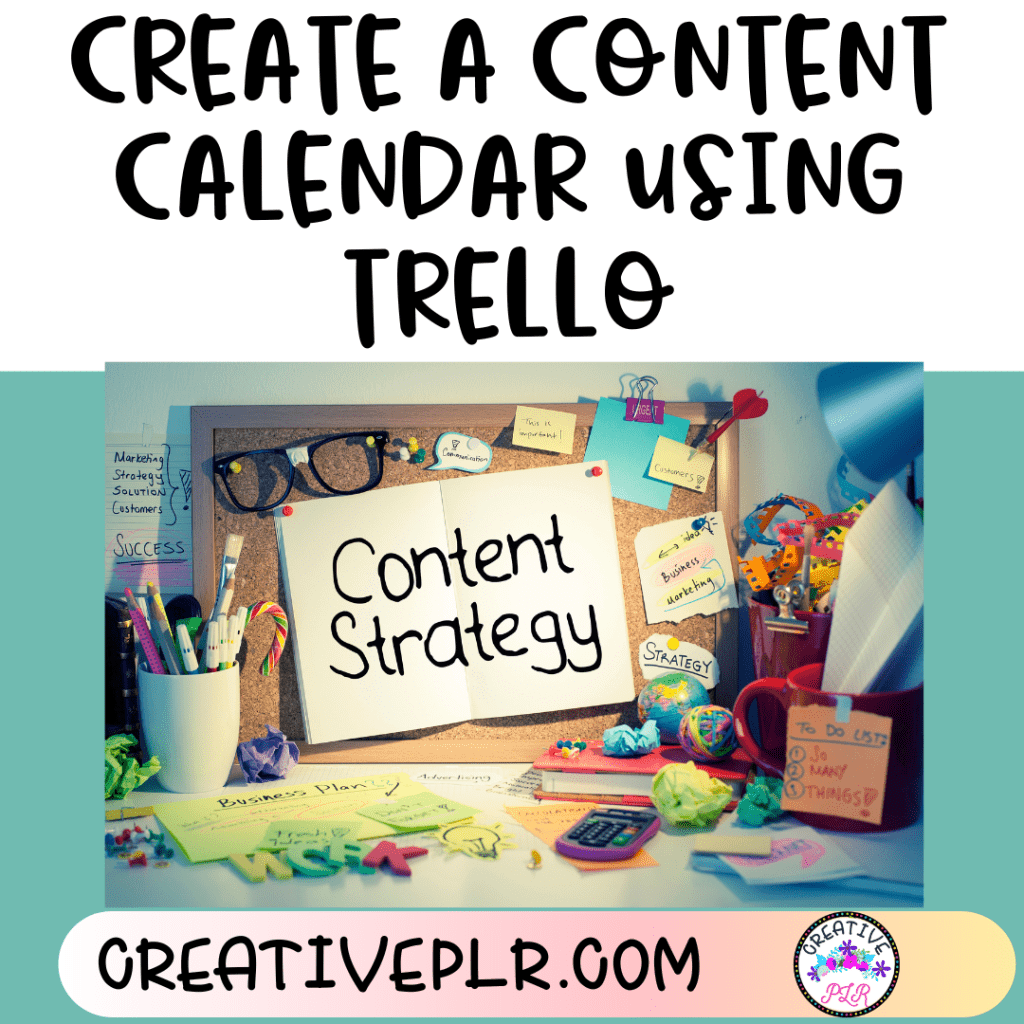
A content calendar is simply a schedule of when and where you will publish your content. This can include blog posts, social media updates, email newsletters, etc. Having a content calendar helps you keep track of deadlines and ensures that your content is consistent and high-quality. Knowing in advance what and when you will publish will save time and make your posts more cohesive.
Some of us work on our own, while others use a Virtual Assistant. Both options benefit from having a well-designed content strategy to help us maintain focus. It also helps us save time and be more productive.
Benefits of Using a Content Calendar
There are numerous benefits of creating a using a content calendar. Each business is different but all businesses are improved with efficient planning and improved productivity. Here are a few benefits you may not have thought about:
More Audience Engagement
Regularly publishing content keeps your audience engaged and helps maintain and grow your online presence. A content calendar helps ensure that you’re posting consistently, whether it’s daily, weekly, or monthly.
Regular updates signal reliability to your audience. When they can expect and receive content from you at consistent intervals, it establishes a rhythm of trust. This trust translates to brand loyalty, and over time, an audience that is more likely to engage with and advocate for your content.
Planning Ahead
A content calendar allows you to look at the bigger picture, planning content around important dates, events, product launches, or any other significant occurrences. This proactive approach ensures that you’re not scrambling for content ideas at the last minute.
By knowing what you’ll be publishing and when, you can allocate time more efficiently, breaking down tasks such as research, content creation, and promotion. It’s easier to meet deadlines when tasks are spread out and scheduled in advance.
Improved Content Quality
Planning in advance means you can spend more time on research, refinement, and optimization. This can result in better quality content, which can lead to higher engagement and better SEO results.
When you plan your content in advance, it’s easier to ensure a variety of topics, formats, and mediums. A content calendar can help you identify patterns or gaps, ensuring a diverse mix that appeals to different segments of your audience.
Why Use Trello for Your Content Calendar?
Trello is a versatile and user-friendly platform that offers a wide range of features to help you streamline your content creation process. By leveraging Trello’s intuitive interface and customizable boards, you can effectively plan, organize, and collaborate on your content marketing strategy.
For me, It’s the best way to organize everything for my content calendar. Here I organized the bundles I participated in last year. I kept track of the results, products submitted and subscribers added. This type of information can help you make decisions in the future.
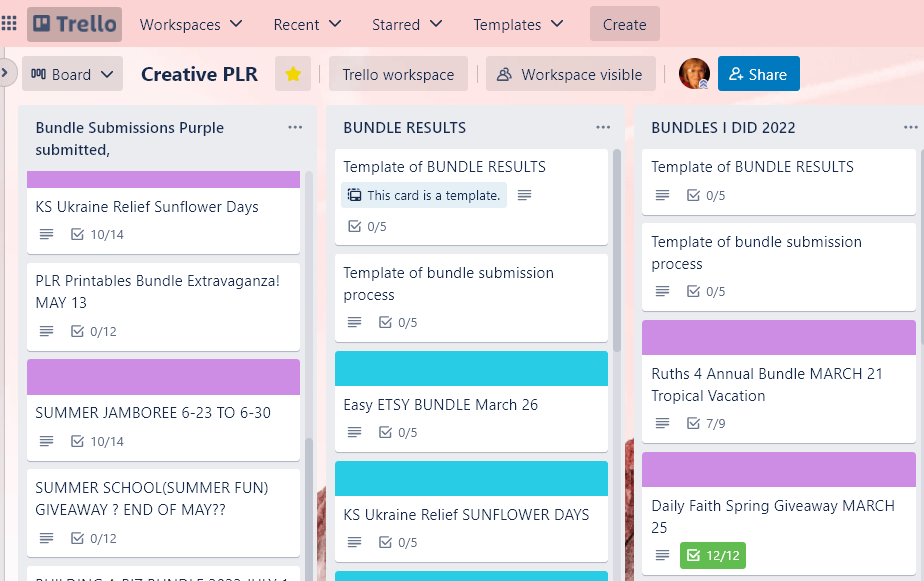
But you can use any tool that you choose. There are plenty of choices: Asana, Airtable, Excel and even Google Sheets will work. Or you can use a plain old calendar (either a paper one or a Google Calendar).
I started using a paper calendar with little post-its to arrange content and promotions as my content calendar and still use a calendar to jot down ideas before transferring to Trello.
Why Trello is My Choice for a Content Calendar
Visual Organization: Trello’s board-based system allows you to visually organize your content calendar ideas, tasks, and deadlines. You can create boards for different content categories, such as blog posts, social media posts campaigns, or email newsletters, making it easy to stay on top of your content creation efforts. This is my content calendar for my teaching blog posts.
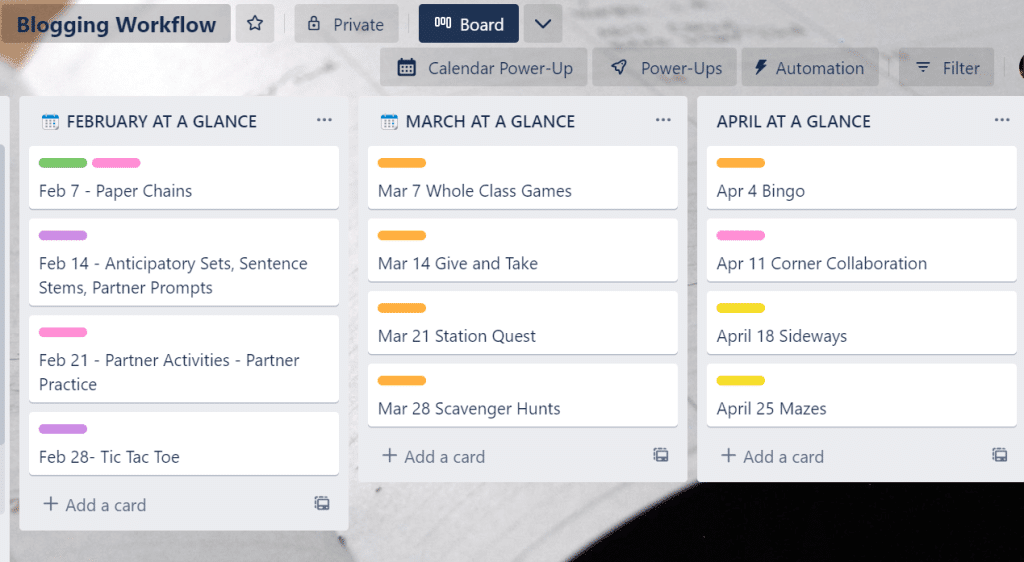
Collaboration Made Easy: Trello’s collaborative features enable seamless communication and coordination among team members. You can assign the entire content calendar with tasks, set due dates, so team members can add comments, ensuring everyone stays in the loop and progress is tracked effectively.
Customizable Workflows: Trello’s flexible structure allows you to tailor the workflow to match your specific content creation process. You can create custom lists, labels, and checklists to reflect the different stages of content development, ensuring a smooth and organized workflow.
You can have one workspace for social media platforms or separate workspaces for each social media account. This would especially be helpful if you have someone helping with different parts of your marketing campaigns.
Integration Capabilities: Trello integrates with various popular tools and platforms, such as Google Drive, Slack, and Asana, enabling you to connect your content calendar with other essential resources and streamline your overall workflow. You can also use Chrome extension to add to the options. Want to connect your Gmail to Trello? Done. Then save important emails to a board.
Now, I use the free version of Trello and always have. Some of the integrations are through a 3rd party and have a cost. I suggest you try using it first and if it works for you, gradually adding some more components. No point in setting it all up with a cost if this is not something you want to continue with.
Setting Up Your Trello Content Calendar
If you already have a Trello account, you are good to go. But if you have never created an account that is the first step. I have a free account and have been using that free account for over a decade.
You can see that even if I wanted unlimited boards (I already have it, just 10 for each workspace), it is still not expensive. And even with the free plan, you can still use it with teams. Pricing:
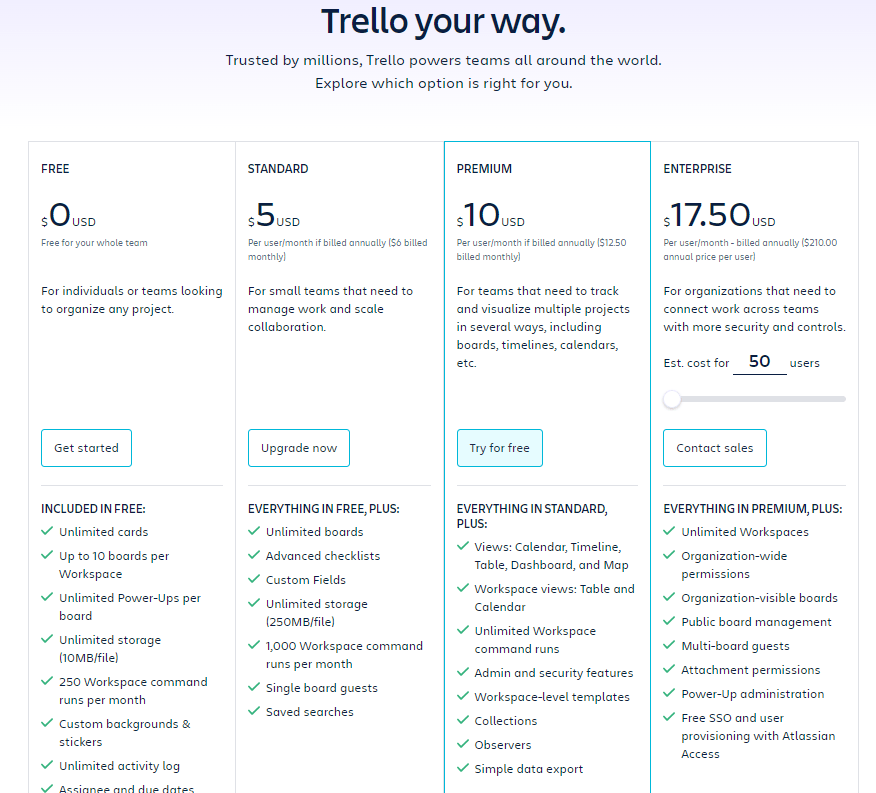
Every once in a while, someone suggests an option that requires a paid account and I think it over, but so far, my free account does everything I need it to do.
Step 1: Create a Trello Account
If you already have a Trello account, you are good to go. But if you have never created an account that is the first step. I have a free account and have been using that free account for over a decade.
It’s a good idea to try out the free version first and see if you like it, and then research what options are free and paid to see if it is worth the expense of upgrading.
A free account allows 10 boards, however you can have multiple workspaces. I have about 6. Every once in a while, someone in a bundle offers a ‘free’ trello board to organize something and I always pick it up to study and learn from.
Step 2: Create a Board
To create a new board, click on the “Create new board” option. Give your board a descriptive name, such as “Content Calendar 2024,” to easily identify its purpose. You can set up your workspace in a way that functions for you. For instance, if you like working by the month, set up your workspace with the months on each list, and for each month make a card for each type of content, how you will promote it and when you will schedule posts.
Or, maybe you want a workspace for each month. With the different platforms as the lists and on each card you will have new content, use dates to schedule posts and include important events. You may want to experiment with different formats to see which is more productive for you.
Step 3: Set Up Lists
Lists serve as the backbone of your content calendar, representing the different stages of your content creation workflow. Create lists that align with your content creation process, such as “Ideas,” “In Progress,” “Editing,” “Scheduled,” and “Published.” This structure will help you track the progress of each piece of content effectively.
Or you may have a different process.
You could have a board for each month and within the month have different lists each social platform or social media channels like Pinterest, Facebook, Instagram, Tik Tok, and now Threads.
Step 4: Add Cards
Within each list, you can create individual cards for specific content pieces. Cards can include details such as the content topic, assigned team member, due date, and any relevant attachments or links. This level of granularity ensures that every task is clearly defined and easily accessible.
Here are my blog posts with covers so I can easily see blog posts that have been published. The cards also contain keywords, links and the optins that were included on each post.
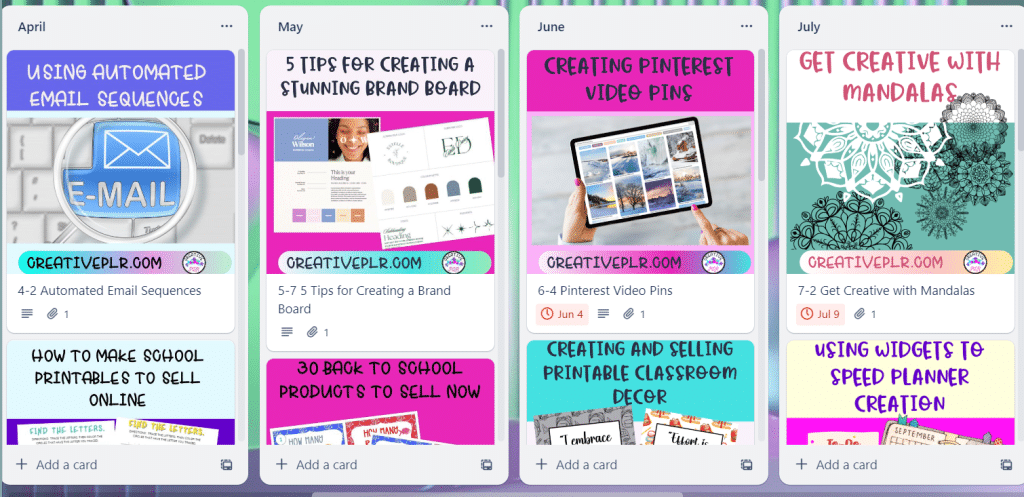
Here, I took the titles of the blog posts and arranged them by topic. This way I can get more ideas about each topic with a new slant, not repeat the same topic again, and be able to link to other blog posts to increase SEO.
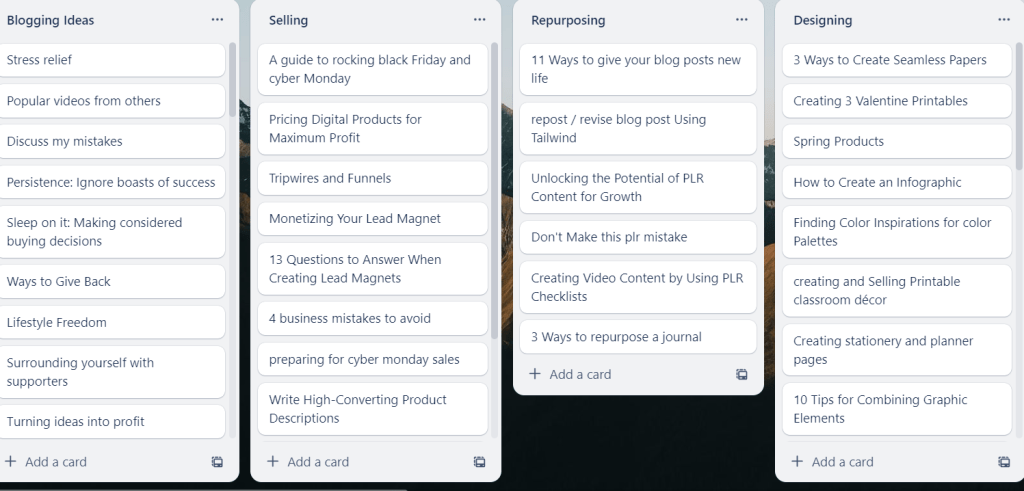
Step 5: Utilize Labels and Due Dates
Trello offers customizable labels and due dates to help you prioritize and categorize your content tasks. You can use labels to indicate content types, target audience, or content format, providing a quick visual overview of your content calendar.
Setting due dates ensures that deadlines are met and everyone involved is aware of the expected timeline. And using the dates, you can then view your content in a monthly calendar using a power-up.
If you use important dates on each card you will be able to use a power up to see everything in a calendar view. That power up is free and one I use. It helps to see if I am consistent in scheduling content and promotions.
Step 6: Collaborate and Communicate
If you have others on your team, you can Invite team members to join your content calendar board by adding them as members. This way, everyone involved can contribute, assign tasks, leave comments, and collaborate effectively throughout the content creation process. Communication is key to ensure a smooth workflow and timely delivery of high-quality content.
I just read that 50% of online entrepreneurs have some type of help such as a VA, and being able to share a workflow with a team or individual helps give specific goals to the entire team even small teams.
Best Practices for Optimizing Your Content Calendar
To succeed in the content marketing realm, it’s essential to implement some best practices when using Trello for your content calendar.
Consider the Following Tips:
Automate When Possible: You can use buttons and rules to automate some of your processes. You can use rules to move cards from one board to another, assign tasks to different days of the week and to move cards to a “complete” list when finished.
Use Labels and Dates: You can use labels to color code different parts of your content. You will be able to see at a glance different types of content. Assign dates to every card. Then view your content in a monthly calendar to stay on top of due dates.
Use Covers: Having covers on your lists helps organize your content visually and makes it quicker to identify what you are looking for. Use images from social posts, blog posts, content covers, sales pages, etc.
An effective content calendar is a crucial component of a successful content marketing strategy. By leveraging Trello’s powerful features, you can streamline your content creation process, enhance collaboration, and save more time. It does not matter what type of content you produce: digital products, blog content, social media content, or courses.
Having a tool to help with content planning will help you avoid duplicate efforts. Have I told you that I created a wonderful planner and then a week later, got a great idea for a planner, having forgotten that I created the same planner the week before. Being stressed and trying to get too much done means you will forget things. Having a content schedule is a great way to avoid problems like that.
Remember that this is a tool to help you to build a strategy for content marketing success. You want to take those pieces of content that you already produce and organize them in a way that you can get a view of the month/quarter/year to help you manage your time and your social media strategy.
If you spend hours working on your Trello board and run out of time to work on your content or marketing, then you are focusing on the wrong things. The goal is to focus on those things that will build your business, not the tools. And, if you get stuck, Trello has a huge base of tutorials you can check out.
Do you have a content calendar that you work from? I would love to know how you organize your content, how you schedule your products and promotions and what tools you use. Drop a comment below or email me at [email protected]